



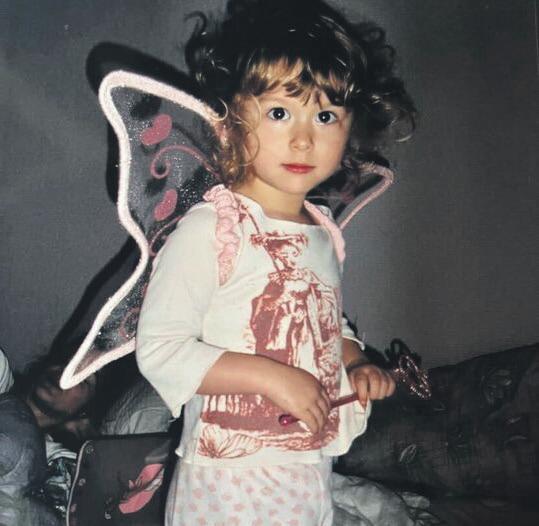

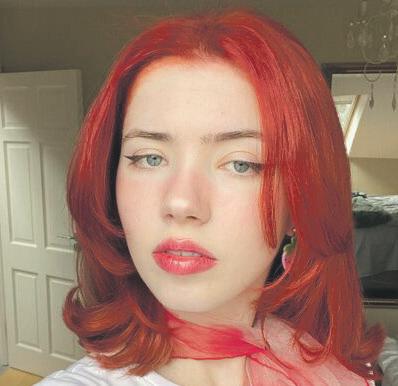

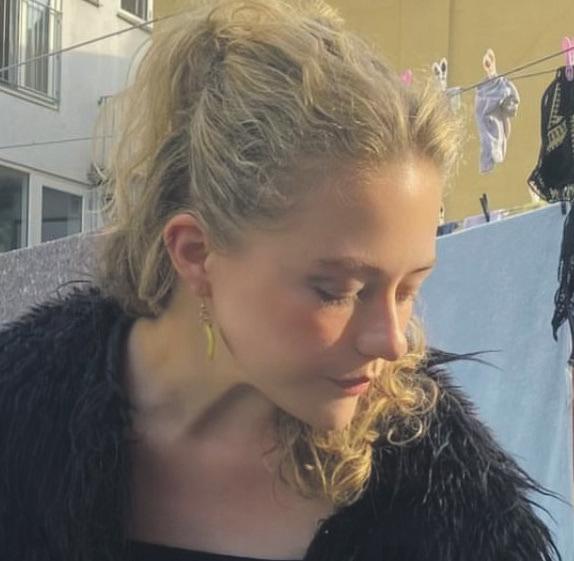
-
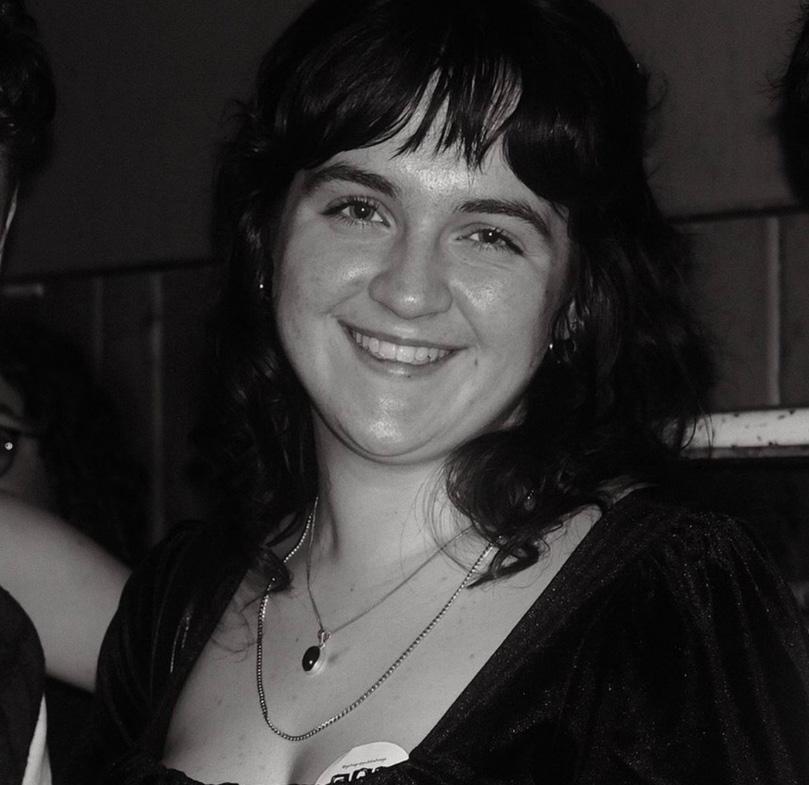
- page 15
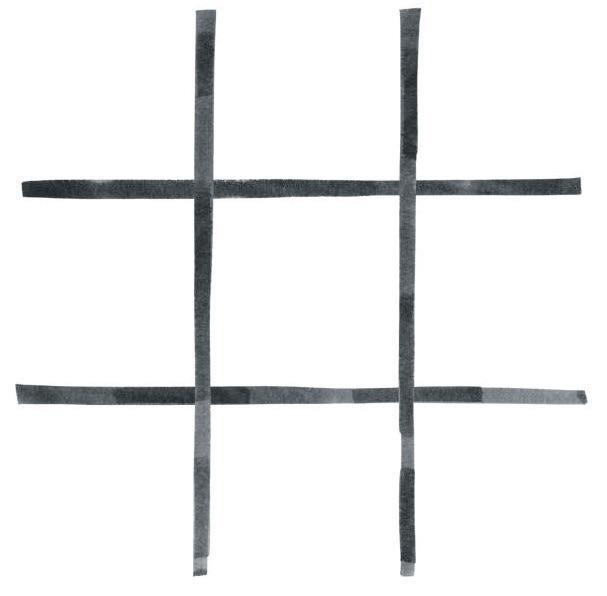
PUZZLES
- page 16
HOSANNA BOULTER “Moving Abroad Alone” - page 3
PHOEBE PASCOE “The Point of Print”
- page 4
FREJA GOLDMAN “Danish Artists To Know”
- page 6
CHARLIE HASTINGS “Kamehameha!” - page 8
CLEO DALY “Fun & Games”
page 10
MARNIE CLARK “Ain’t No Picnic” - page 12
CLARA POTTS “Meet Lainey Whelan”
- page 14
BRIDGET MCBRUISER “Thinking Fondly”
2
MOVING ABROAD ALONE... AGAIN
Hosanna Boulter reflects on what it feels like to move to a new country for the second time.
Iam standing in a crowded and sweaty basement student bar in the Netherlands talking to a new friend. I hear myself say, “It’s not that we are not feeling all of the things that you are, it’s just that we know that these feelings are temporary”. As soon as the words leave my mouth, I am sort of internally amazed by them. In that moment I had said aloud something that I was yet to realise – I was finding the process of moving abroad as a student smoother the second time round.
The friend I was talking to was telling me how homesick they felt. They explained how they believed that everyone else was so together (myself included) whilst they were flailing and it was detracting from their exchange experience. Having it all together is not something that I have often been accused of, so it took me a bit by surprise.
Moving abroad on your own in your early twenties to a place where you have only been once and where you know virtually no one (in my case I knew one person) is an inherently uncomfortable and discombobulating experience. Doing it a second time has only confirmed this for me. The avalanche of new information thrown your way — much of which is highly important and consequential to your stay in that country — is exhausting to process. In fact, over the course of my exchange I have found myself sleeping far more than I am used to. As exhilarating and adrenaline-inducing as the experience has been, I have also found myself perhaps more tired than ever
However, there is one major difference I discovered moving abroad this time round. The distinction is that, although I feel as fearful and apprehensive as I did the first time, I have developed a confidence in the temporary nature of such overwhelming feelings. I can reassure myself that these feelings are all part of a process and, crucially, that this is a process I have successfully completed before.
During my first few weeks in the Netherlands, I found myself trying to celebrate the small things: the first time I didn’t have to use Google Maps to find my faculty or the supermarket, discovering my new favourite coffee shop, or decoding the library seat booking system. Last time around I was in such a rush for familiarity and to be “settled” –whatever that means – that I did not enjoy the excitement of discovery.

“Although I feel as fearful and apprehensive as I did the first time, I have developed a confidence in the temporary nature of such overwhelming feelings

It should also be noted that I am two years older than I was the last time I attempted this. I am not going to claim to have exponentially grown up in that relatively short amount of time. But, I do think that I have got to know myself better since I first left home. For instance, I know now that I really enjoy unfamiliarity. In fact, I get a thrill from new places and experiences. So, over these past two months I have tried to hold onto that feeling, I am committed to trying new places out or saying yes to travel (as long as my budget permits). As of writing, this is something that has led me to Vienna and Budapest, two places on my bucket list that I had no idea I would be able to visit at the start of my exchange.
I haven’t cracked the code for moving abroad on your own. Some days were tough and all I wanted was to be around people who would not require background information – who would know precisely what I needed to hear. Calls, Facetimes and long text chats help in this regard, but we all know it is not the same. Instead, what I am trying to reflect on is how my approach has changed. I feel that I am in less of a rush and simply trying to enjoy these few short months in a place I may never return to. This is a perspective I want to bring back for my final year in Dublin in the hopes of making the most of my other homeaway-from-home.
Photo by worldwanderista.com
3
Photo via CN Traveller
THE POINT OF PRINT
Phoebe Pascoe explores the future of print magazines and speaks with the people insisting that print is far from ‘dead’
When my parents came to visit me in New York last week, they brought me essentials from across the Atlantic: two packs of Mini Eggs and the latest edition of British Vogue. I won’t claim, à la Carrie Bradshaw, that the latter “fed me more”, but the heady anticipation on turning the first, thick pages of a magazine has not lessened since I was six and running home from the corner shop, that month’s Moshi Monsters Magazine in my clammy grasp. Of course, no one had told me yet that, apparently, print is dead.
Between 2010 and 2022, sales of print titles in the UK fell by 70 per cent. I won’t regale you with the list of publications that can no longer be found on newsstands, or the newsstands themselves that are now vape shops. But amidst lay-offs and pay-cuts and the AI apocalypse, a prolonged diet of digital media has not sated the appetite for print. Like the stomach of someone on their first day off Ozempic, rumblings of hope are unmistakable. The food magazine Saveur returned to print this March – and sold out – after a three year hiatus. Nylon is also reviving its print edition this month to mark its 25th anniversary. In 2022, the circulation of Private Eye, which is print-only, reached its highest since 2017. Closer to campus, The Library Project in Temple Bar can be found selling the current issues of 44 independent Irish magazines and journals. If print is dead, then it seems a lot of us believe in ghosts.
But it is precisely print’s unghost-like quality – as opposed to the spectral nature of the online – that many are crediting with its refusal to die. Danielle Mustarde, the Operations Manager at magCulture (a website, storefront and event celebrating all things print), compares it to “how vinyl has had a renaissance in the wake of streaming platforms removing that more intimate relationship with music”. In 2023, sales of vinyl records in the UK reached their highest level since 1990. One look at the display of overpriced LPs in Urban Outfitters will tell you that this isn’t just a nostalgia kick for older customers. At the magCulture shop in Clerkenwell, London, Mustarde says the majority of visitors are “young creatives – those studying fashion, journalism, design, literature, art”. She thinks this is partly because “those in their late teens and early 20s have a real affinity for printed matter [...] It’s something that I feel bridges generations – so many people of all ages seem to have a soft spot for the physical stuff, magazines, vinyl, books”.
This ability of print publications to control what words were given more weight is, of course, why the digital was heralded as equal opportunity – anyone could start a blog or write a tweet. And it is also credited with why online writing (especially news) gained popularity over print in the first place. That ability to publish something as the event was happening. The printed page seemed to resist change in its very physicality. But I’ve felt lately that it is the physical which now offers much greater room for the unanticipated. On Spotify, I have found it increasingly difficult to simply stumble across new music. The app’s curation of unique playlists is based on their users’ individual listening history. It is unlikely what I am listening to will evolve if I am greeted by playlists containing the songs I was listening to this time last week. Algorithms tend to regurgitate rather than reincarnate. They are confident that they can show us art, content, or even people that we will like precisely because they are built on what they infer we have liked in the past. Alternatively, print publications are founded on reinvention – one cohesive publication must redesign itself into something new and forward looking with each edition.
“If print is dead, then it seems a lot of us believe in ghosts
This is because print publications aren’t produced with you specifically in mind. Instead, thought is given to what is interesting, attention-grabbing or enjoyable for that all elusive figure: the reader. Rather than the order or content of stories being tailored to you individually – as some social media do – they cater to you as part of a community. Print publications are not just for you, but also ask something of you (that you turn the page) in order to enjoy them, as opposed to our phones which often load the next video without us even having to click. Legendary editor of Vanity Fair and The New Yorker Tina Brown said it best in her book, The Vanity Fair Diaries: “A magazine – a relevant one – should be a sound, not an echo.”
These tangible items conjure stability, giving not just literal substance but a substantive air to the art or ideas they contain. Trinity graduates Cassia Gaden Gilmartin and Elizabeth Murtough founded Channel, a literary magazine focused on climate change, in 2019 on the day of the first climate strike of that year. Gilmartin notes that there is “a prestige factor attached to print publishing as compared to digital”. When starting Channel, this was something the pair “wanted to co-opt on behalf of the writing we publish. We wanted the things our writers have to say about ecological degradation to be taken seriously, and we wanted audiences to see that this kind of writing matters”. Some feel that the printed word holds more gravitas than its internet equivalent. When an article is published online it can be edited or more speedily retracted. Even though it is easier to throw away a magazine now than to scrub the internet of something you’d rather wasn’t on there, putting an idea on paper connotes a confidence that its validity will remain unchanged – at least until the next edition is circulated.
This is a maxim Patrick Mitchell, the founder and creator of Magazeum, as well as the host of the Print is Dead (Long Live Print) podcast, reiterates. He notes that magazines don’t just incorporate culture into their pages, they often create it. “In the period beginning, say, in the early eighties and on into the early 2000s, the most talented creatives in the world were making magazines. Magazines themselves were the most artful, creative objects we had in those years.” Mitchell and his team often call magazines “The Original Influencers”. Tina Brown is just one in a list of the biggest names in editing, fashion and journalism who have graced Mitchell’s podcast. And his noting of magazines as themselves “artful, creative objects” strikes me. There is as much skill in designing a magazine as there is in writing one.
I think there is a tendency to forget this: we talk about the importance of keeping the arts alive for the public good but deem the demise of print inevitable. I don’t say this just to validate the In-Design-induced headaches I get the weekend before this very magazine goes to print. Gilmartin notes that the look and feel of Channel deliberately mirrors its message: “Channel is printed in A5, which isn’t a standard book size [...] and the covers are unlaminated, both to minimise our use of plastic and to keep a little roughness around the edges. Our issues are designed to feel a bit familiar and approachable, but a bit out of place amidst the output of corporate publishers.”
Feeling “a bit out of place” has been the impetus for many an independent publication. Zines – mainly distinguished from magazines by their not-for-profit status – have long been connected with radical movements, innovative art and people on the fringes trying
4
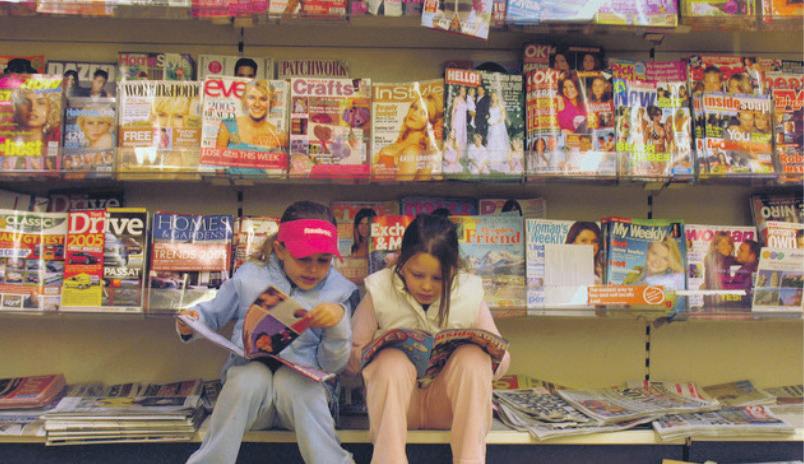
to have their voice heard. It makes sense that creative people would once again reach for this medium; any news article about Gen Z links them (us) with a different ‘crisis’. It’s not just creating but also consuming these publications which can serve as a balm against a stressful time. Kat Craddock, the editor of Saveur, told Mitchell in a recent episode: “Kids are telling me that staring at a screen all the time is work. That it’s exhausting. They want a print magazine.” He has found this to be a “somewhat universal message running through our interviews [...] with printed magazines, the user is in complete control – there are no pop-ups, beeps, clickable distractions… no stress! It’s such a calm experience”. Perhaps this is why Stevie Nicks’ post-show routine involves eating sliced apples and reading her favourite magazines until 3am. In a show of enthusiasm for this new wave of print, Mitchell and the team at Magazeum have “recently launched a second show, The Full-Bleed Podcast, which is subtitled ‘a podcast about the future of magazines—and the magazines of the future’”. Rather than hearing about the glory days of print, it features “the next generation, who’re starting indie magazines of all kinds and using a variety of strategies to succeed”.
The question of what it means for a magazine to “succeed”, though, is the key. Success in terms of delighting or stimulating readers does not always mean being able to stay financially afloat. Mitchell suggests a reorienting of the typical model: “The big publishers should take their clues from the next gen magazines. (Hint: start by charging what they’re worth! $25 is not too much to charge for a beautifully-produced magazine!).” In contrast, most magazines’ money-making models have, since the late nineteenth century, relied on selling print copies cheaply, sometimes for less than the cost of production. This created wide readerships, and the publishers profited from the adverts inside the pages they were selling. The idea of asking consumers to spend more on a magazine – more than they might spend on a book, for example, or several months of Netflix – during a cost of living crisis seems counter-intuitive. Yet I can see where Mitchell is coming from. Advertisers no longer want to promote their wares in magazines. One character in Sloane Crosley’s novel, Cult Classic, describes advertising in print as “tossing wet pasta down a well”. Online newspapers with paywalls are pretty much the only ones with any stability at the moment. And people are
willing to pay for art: despite rising prices, a 2022 survey found that the vast majority of UK book-buyers still view books as good or excellent value for money due to the hours or weeks of enjoyment they provide. Perhaps paying what print publications are worth shouldn’t feel like a radical idea.
After all, magazines aren’t just sometimes expensive to buy. They’re expensive to make. Mustarde notes that, “the price of paper has gone up significantly in recent years and shipping out of the UK is much less simple since… [sigh] bloody Brexit”. The cost of paper has led to one factory having an effective monopoly on printing in the UK. However, the team at MagCulture have seen people getting print issues out with the help of fundraising platforms such as Kickstarter: “We’ve stocked plenty of magazines who’ve found their way to our shelves through crowdfunding.” Gilmartin notes that printing Channel would not be possible without a combination of her personal financial privilege and the grants that the magazine has been given. The publication has also received Arts Council funding since 2021, which Gilmartin expresses gratitude for. However, she says: “There are considerable costs involved in print publishing – including the cost of printing itself, as well as the provision of contributor fees reflective of the time and skill that writers invest in their work – and until funding is available that can cover those costs as well as allowing us to pay ourselves for our own time, I think small publishers will always have to strike a difficult balance.” For many, like Gilmartin, this balance involves working on a print publication alongside other money-making endeavours. “Running Channel isn’t a full-time job, much as it might sometimes feel like one – it can’t be, because it doesn’t earn me a full-time income. For most of us involved in journal publishing, our work as publishers is by necessity one part of a multifaceted career.”
Evidently, many people in print are exhausted. But there is a reason that young people such as Gilmartin continue to enter and alter this industry. In researching this piece I was repeatedly confronted with reasons to be positive. Hearing from Mustarde, Mitchell and Gilmartin gave me a feeling of inspired excitement about the future of print media. A sense of possibility. I felt an anticipation not, in fact, unlike the eager the eager expectation of arriving home, settling onto the sofa and opening up a magazine.
Photo by Charlie Knight
5
ARTISTS YOU DIDN’T ASK FOR, BUT SHOULD KNOW
Freja Goldman divulges the musicians going from the Danes’ best kept secrets to international stars.
In 2021, Nørrebro, a trendy area in the northern part of Copenhagen, was named the “Coolest Neighbourhood of 2021” by TimeOut. This was followed by another nomination for the city the year after; Værnedamsvej, a street located in Vesterbro, was crowned one of the “coolest streets of the year”. Perhaps even Miss Emily in Paris herself is on to something, the actress settling down just last year in the glorious city of… well, mermaids and hot people, I guess. It seems in recent years, Denmark, and Copenhagen especially, has garnered a lot of attention internationally - and for good reason. Not only has this humble nation consistently ranked amongst the happiest in the world, it also has an incredibly vibrant music scene with a tight knit community of artists working together in various constellations. With the prospect of summer and freedom on the horizon, perhaps it is time to look to this Scandinavian country for the solution to all your problems. In my totally unbiased opinion, I predict Denmark to be the ‘it’ destination this summer. So why not prepare yourself to be insufferably superior, indeed “one of the locals”, by listening to ten of my favourite Danish artists at the moment.
Statisk
Mathias Ranch Skov (Singer & Songwriter) and August Kulmann (Producer, Synths, etc.) write punchy electro-pop/rock that makes you want to pull a Troye Sivan and run around aimlessly through the night in your cuntiest sequined ensemble. Through Mathias’ raw and powerful voice and the carefully constructed chaos of August’s soundscape, the duo manages to capture the anger and anxiety that comes with being young in a postmodern society. Having experienced the ultimate lows of life at an early age, these guys have mastered the art of writing angsty indie-pop/rock in a way that doesn’t feel overly romanticised or disingenuous. Their debut album ‘Trampoliner’, besides having one of the most disgustingly aesthetic album covers I’ve ever seen (in a good way), is in my humble opinion a 10/10.
Stand-outs: The entirety of ‘Trampoliner’ (particularly ‘Kender du Følelsen’ and ‘Lige Linje Til Solen’), ‘Højhus’, ‘Motorvej’.
Hun_Sagde
Emma Lillelund Saaugaard, otherwise known as Hun_Sagde, writes of anxiety, abuse of power, existentialism and religion – you know, all the good stuff that you’re thinking about on the Luas – in a relatable and honest way. With songs like ‘Ring til Gud, Sig han er Død’ (‘Call God, Tell him He is Dead’), and ‘Ingenting’ (‘Nothing’) she manages to transform big and scary topics into beautifully raw and emotion-
al hip hop with R&B and art-pop elements. Although she has only released an EP, each song is so well constructed and the lyrics so stunning that she is definitely still worth checking out. Of course, I realise that most of you aren’t able to understand Danish, but Google Translate will be your friend. If not, I will translate it for you!
Stand-outs: ‘Ingenting’, ‘Fanget i en Drøm’, ‘Ring til Gud, Sig Han er Død’, ‘Ik Sig Det Til Nogen’, ‘Hende’.
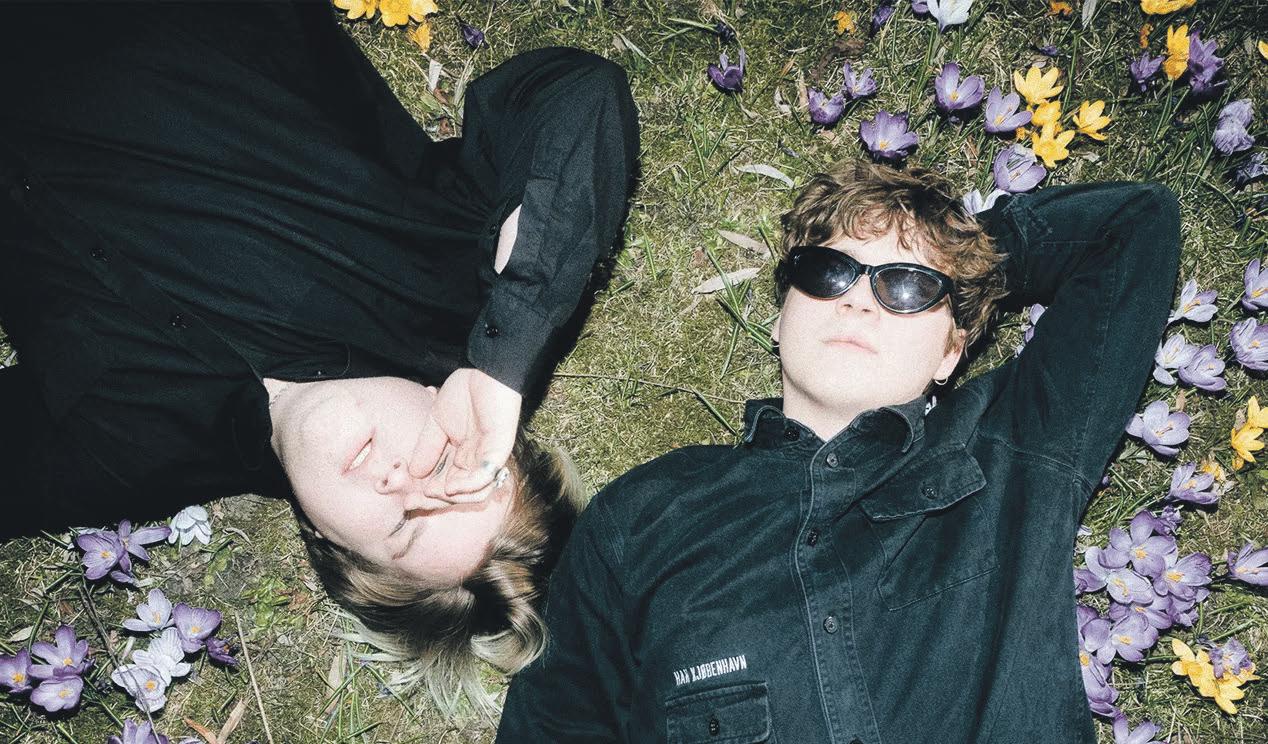
Gorgeous
No word better describes the ethereal, guitar heavy tunes of Marie Louise Persson Bjarnarson and Andreas Enrique Murga than the name of the duo itself. The indiepop/country sound coupled with Marie’s unique voice is indeed nothing short of gorgeous. With picturesque and dreamy lyrics that feel as though they are painting a movie scene in front of you, you’d be cheating yourself if you didn’t give them a listen. And get this: their songs are actually in English! The pair have only released a few singles, but they potentially have an album/EP coming soon, so this is your chance to have a ‘I knew them before they were on TikTok’ moment.
Stand-outs: ‘Divine’, ‘Nothing Was Perfect’, ‘Subconscious’, and ‘Coyote’.
Fraads
Sexy, energetic and just a little bit weird. I scarcely have a better way to describe these guys, but that is also why I love them. FRAADS consists of childhood besties David Engelbrecht and Frederik Espersen, who’ve been creating sassy pop/hip hop/R&B medleys since their debut in 2016. FRAADS performs high energy, absolutely insane gigs, with the lead singer, Frederik, throwing himself around the stage and into the crowd as though he was a tennis ball on a motorway. Frederik also has a solo career under the name ‘Papa E’, which, considering his last name, one might be inclined to think stands for ‘Espersen’, but no. This man has christened himself ‘Papa Erotic’, and I can do nothing but admire that deeply.
Stand-outs: ‘Forsigtig’, ‘I ved ikke noget om mig’, ‘Mama’, ‘Blind Lyst’, ‘00kay’, ‘Dragekvinden’, ‘Akira’, ‘Papa du så flot’, ‘Blinker’, ‘Farlig Danser’.
Phlake
Many may know of Phlake, a Danish R&B duo consisting of Mads Bo and Jonathan Elkær, from their 2016 album ‘Slush Hours’, which topped Danish charts with hits such as ‘Angel Zoo’ and ‘Pregnant’. However, their 2020 album ‘The Illegal Download Of Your Soul’ is my Roman Empire. If I wasn’t constrained by a word count, I’d yap on about all the ways in which it blows my mind. Not only does this album have the smoothest, robotic R&B I’ve ever heard, it also features the mysterious co-artist ‘Mercedes the Virus’, who isn’t actualy an artist, but a manipulated rendering of the lead singer’s voice. I
TEN DANISH
6
Photo of Statisk, by Malthe Ivarsson, Pressefoto
don’t know why this is so crazy to me, but listen to the album with this in mind and tell me it isn’t the coolest thing ever.
Stand-Outs: ‘Waited All Summer’, ‘URL’swhere’, ‘Baby Steps’, ‘Slip Away’, ‘T.I.D.O.Y.S.’, ‘Angel Zoo’, ‘The Rascal’.
Dusin
Dusin consists of Singer/writer Jesper Nohrstedt Boesgaard and producer Mads Vadsager, who debuted with their first album ‘Halvtolv’ in 2018. One of their best (and saddest) songs ‘Forbigået’ – which roughly translates to ‘Passed By’ – tells the story of a friend of the band who one day, unexpectedly upped and left to go live in the middle of nowhere, Into the Wild style. The song perfectly encapsulates the spirit of Dusin: a nostalgic pop sound set to Jesper’s soulful voice contemplating love, friendship and mental health. Dusin’s groovy and romantic beats remind me of dallying around Copenhagen with my friends - and I hope they’ll come to have the same sentimental value for you.
Stand-outs: ‘Først Nu’, ‘Frisk Igen’, ‘Forbigået’, ‘Dør Når Jeg Ler’, ‘Tidevandet Vender’, ‘USB’, ‘Ilden Leger Med Os’.
Pil
Pil writes soft dream pop ballads that some might call Eurovision-coded – in the best way possible. Her music combines the delicateness of her airy voice with synthwave-esque dance beats, all culminating in songs that sound like they could either be playing in a pink-lit, vinyl embellished teen bedroom or on the floor of an insufferably crowded club. The angsty lyrics dealing with issues such as unrequited love, loneliness - just life in general, really - are heavily juxtaposed with the white girl dancing induced by her funky tunes. But in the end: is there really anything better than crying on the dance floor? Yes? Well, agree to disagree, then…
Stand-outs: ‘Drømmer’, ‘Hvad Er Der Med Dig’, ‘Dronning af Månen’, ‘Solen Brænder Ud’, ‘Gangen’, ‘Omvendt’.
Komorebi Garden
The icons behind Komorebi Garden, Ronja Andersson and Eigil Hein Jespersen, make ethereal soul/R&B/artpop inspired by legends such as Massive Attack and Björk. I first discovered the band in 2022 when they played as the supporting act for Blæst. Back then, the pair had only released a couple of singles, but that certainly didn’t hinder them from taking the crowd by storm. In Dune-reminiscent costuming, they immediately entranced the audience when Ronja started recording backing vocals and synths, bit by bit crafting their SciFi-esque musical universe live on stage. Needless to say, I have had their recently released album, ‘Weave’, on repeat.
Stand-outs: ‘The Escape’, ‘Mother of a Child’, ‘Moonlight Madness’, ‘The Ceiling’, ‘First Aid’, ‘Same Kind’
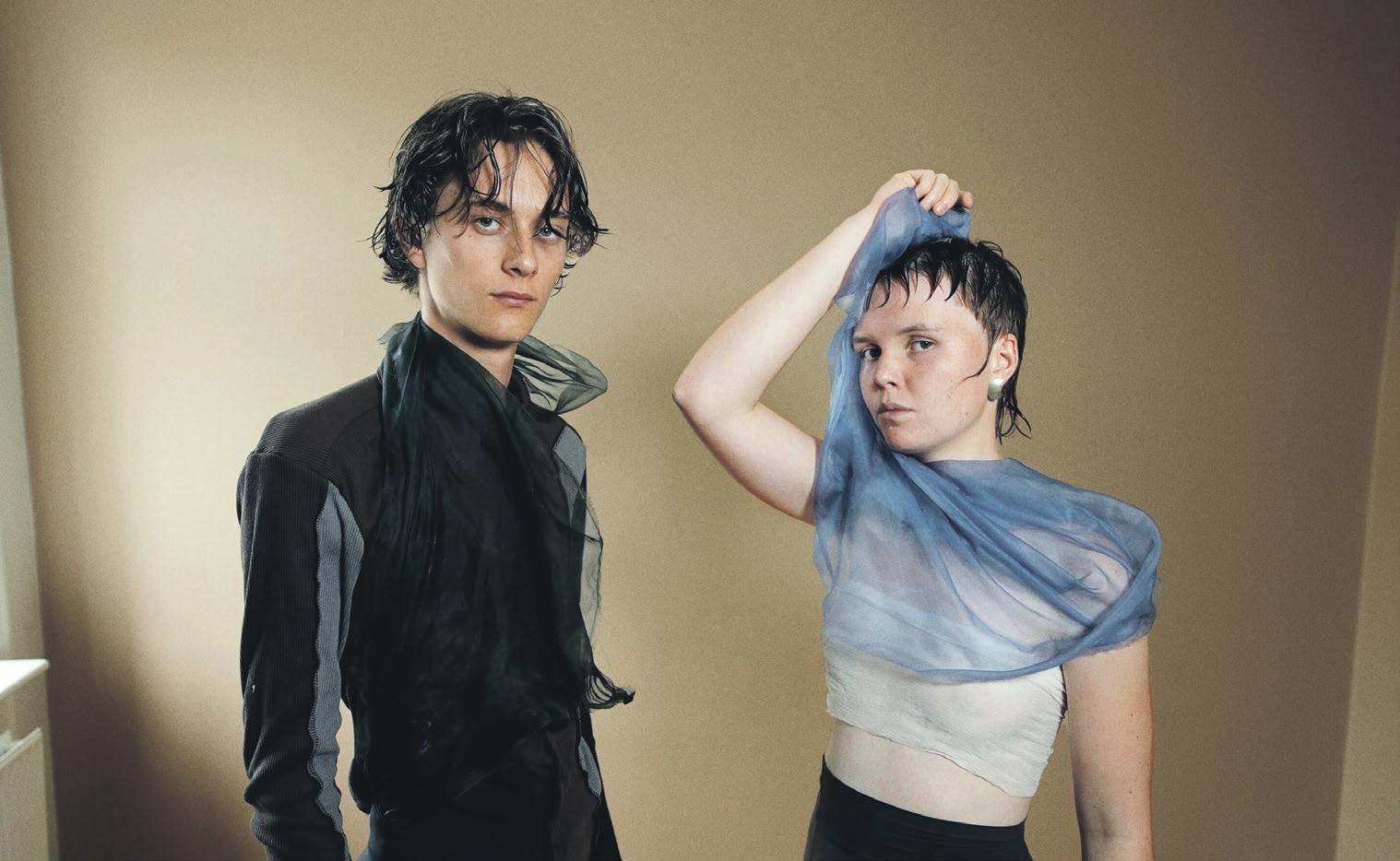
Blæst
A band in every sense of the word, Fernanda Rosa, Lauge Kjærulf, Valentin Buchwald, and Anders Bondo, are a charismatic bunch who, through their charming personalities and groovy tunes, have managed to infiltrate every Soundboks in the nation. Currently one of the most beloved artists in Denmark, last year Blæst had the honour of opening the revered Orange Stage at Roskilde Festival. If you’re planning to visit Denmark or are going on Erasmus there next year, then I’d suggest that you familiarise yourself with the group. A good place to start would be with their break-through single, ‘Juice’, a fun and upbeat song that is sure to blow you away. See what I did there? Cause, you know… Blæst means blown…
Stand-outs: ‘Videre’, ‘All In’ , ‘Juice’, ‘Androkles’, ‘Ukendt Land’, ‘Ego’, and ‘Kig Op Fra Gulvet’.
Fraads
Sexy, energetic and just a little bit weird. I scarcely have a better way to describe these guys, but that is also why I love them. FRAADS consists of childhood besties David Engelbrecht and Frederik Espersen, who’ve been creating sassy pop/hip hop/R&B medleys since their debut in 2016. FRAADS performs high energy, absolutely insane gigs, with the lead singer, Frederik, throwing himself around the stage and into the crowd as though he was a tennis ball on a motorway. Fred-
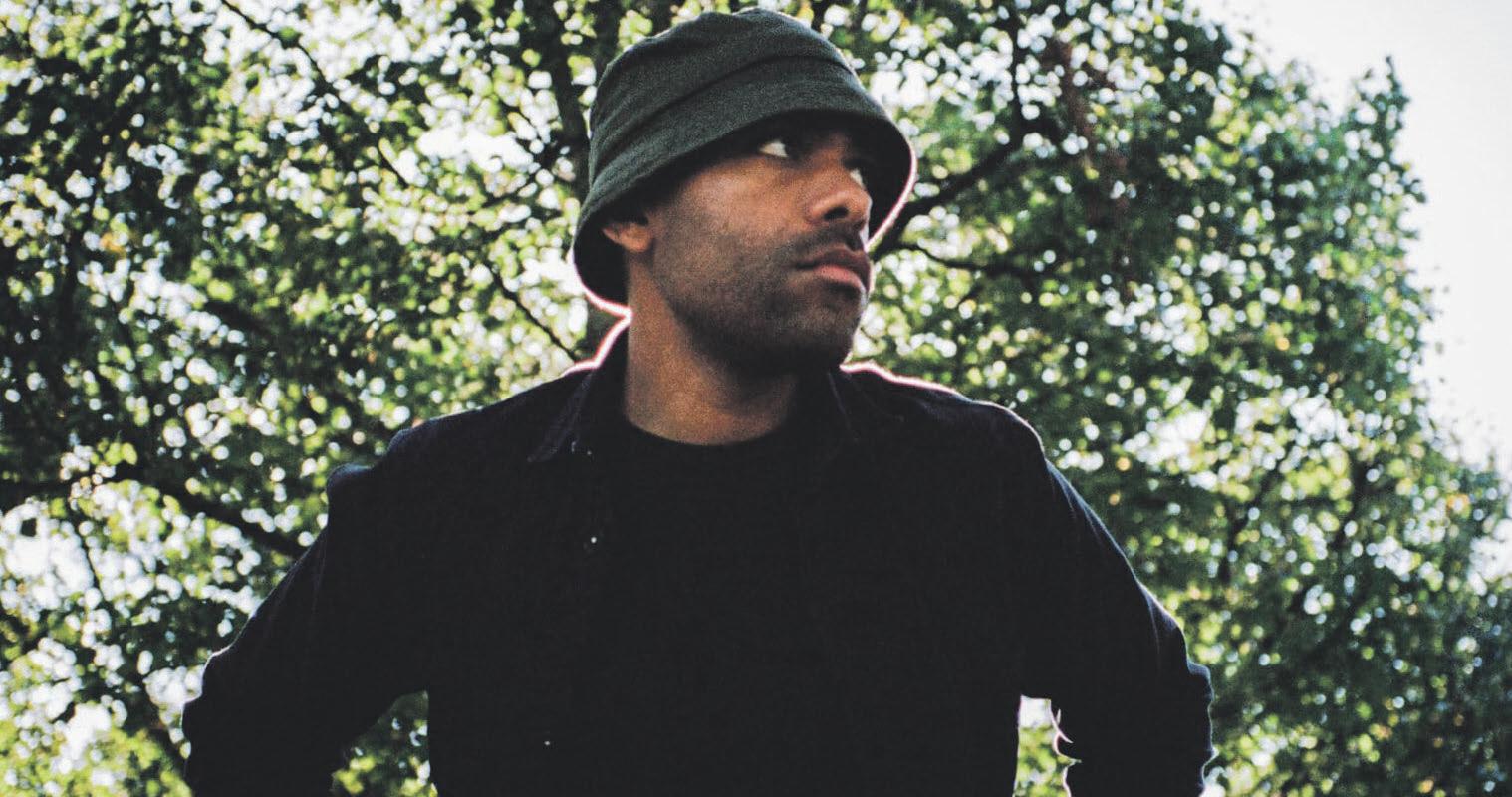
erik also has a solo career under the name ‘Papa E’, which, considering his last name, one might be inclined to think stands for ‘Espersen’, but no. This man has christened himself ‘Papa Erotic’, and I can do nothing but admire that deeply.
Stand-outs: ‘Forsigtig’, ‘I ved ikke noget om mig’, ‘Mama’, ‘Blind Lyst’, ‘00kay’, ‘Dragekvinden’, ‘Akira’, ‘Papa du så flot’, ‘Blinker’, ‘Farlig Danser’.
Hans Philip
Hans Philip is probably best known for his hip hop project, Ukendt Kunstner (‘Unknown Artist’), featuring himself and producer Jens Ole Wowk McCoy. Founded in 2012, they have established themselves as peak Danish canon, causing shockwaves when they released a surprise album ‘Dansktop’ last year after having been on a hiatus since 2016. In the meantime though, Hans Philip had established his solo career, debuting his solo album, ‘Forevigt’ (‘Forever’) in 2019. Differing from the up-beat party tunes of Ukendt Kunstner, Hans Philip’s solo projects are slower and more atmospheric. You’re probably sick of me strenuously describing each artist with a superfluous amount of adjectives and labels, so let me say this instead: Hans Philip sounds like sitting on a warm summer night, cold Tuborg in hand, watching the sun crescent the horizon as the sound of the speaker fades into the crashing of waves. And this is exactly the setting in which his music ought to be heard.
Stand-outs: ‘Tæt På’, ‘Tiden Læger alle SÅr’, ‘Rose’, ‘Hjertebrand’, ‘Årstider’.
Photo of Komorebi Garden by Phie Beckett Stenbæk
7
Photo via United Stage Denmark
A TRIBUTE TO AKIRA TORIYAMA
Charlie Hastings explores the life and work of the acclaimed manga artist, who recently passed away
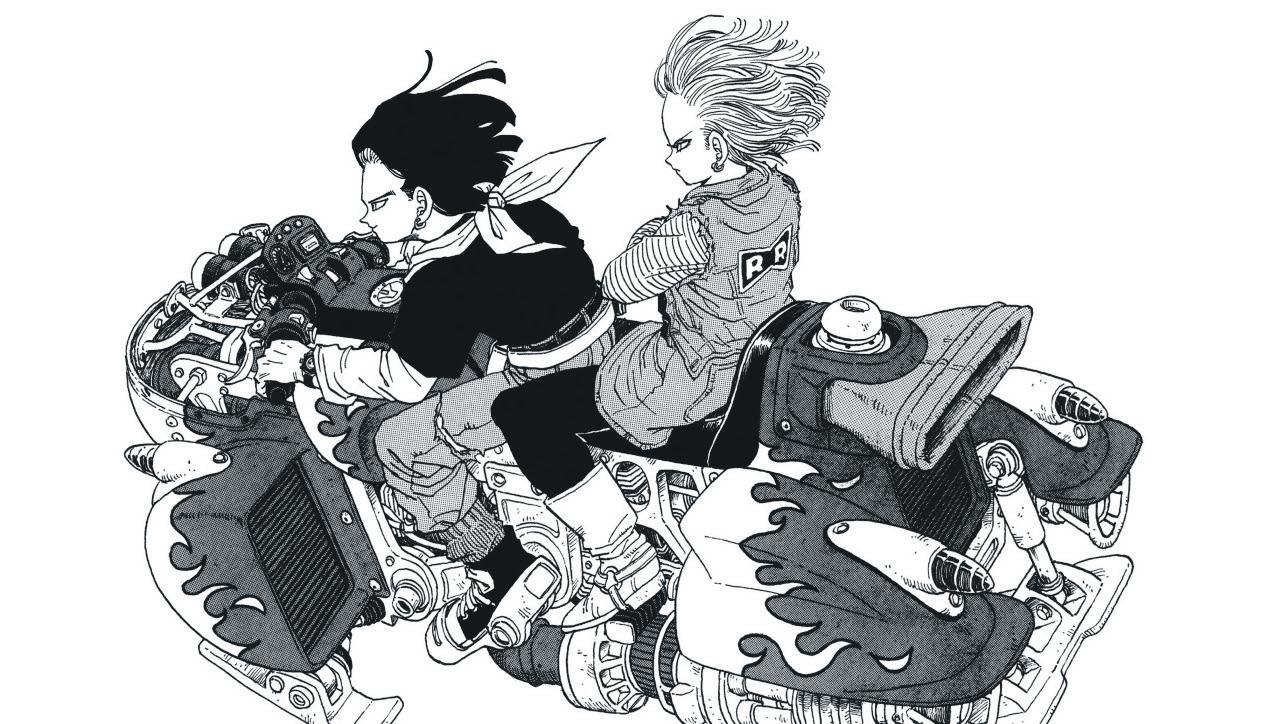
Most University Times readers might not have read the ancient Chinese Text Xijou Ji or ancient Japanese text Nanso Satomi Hakkenden. But many will be familiar with the more modern work that was directly inspired by these texts: namely Akira Toriyama’s famous manga and anime Dragon Ball, as well as its many sequels and offshoots. With the unfortunate recent passing of this legendary mangaka, or manga artist, let’s take a look back at his impressive catalogue of work and the endless rippling effects it has had on pop culture.
Toriyama was born in Nagoya, Japan in 1955, and spent most of his early life interested in drawing. Nagoya was, at the time, relatively rural, so young Toriyama passed the time drawing pictures of nature and his friends at school. In school he could often be found reading other’s manga collections instead of paying attention to his lessons. In this way, he quickly became drawn to Osamu Tezuku’s Astro Boy and tokusatsu films, or Japanese-style live action with lots of special effects. Kaiju films such as Godzilla are some of the most famous examples of tokusatsu films like the ones that inspired Toriyama when he was a boy. Toriyama also cited 101 Dalmatians as an early inspiration for him; he hoped that one day he would be able to draw pictures with the same level of vivacity.
“Toriyama emphasised in several interviews that he was always more interested in spending time with his friends and never fully committed to manga during his schooling
As Toriyama advanced through his schooling, he became
more and more interested in manga, drawing small manga strips in his spare time. Still, Toriyama emphasised in several interviews that he was always more interested in spending time with his friends and never fully committed to manga during his schooling. It was only in his early 20s, after he had quit a job drawing advertisements for a Nagoya ad agency, that he decided to give manga another try. He began submitting work to the magazine Weekly Shonen Jump! as a part of their new regular art contests. He submitted many works unsuccessfully, reportedly garnering over 500 pages in failed stories for the magazine and other publications over the course of one summer. Toriyama was nearly going to quit, but after yet another failed strip he was contacted by Kazuhiko Torishima, who would later become Toriyama’s editor, when he sent him a letter encouraging him to continue with his art and to perhaps think about adding a female character lead. Toriyama listened to the advice. The eventual result was Dr. Slump, Toriyama’s first resoundingly successful manga.
The manga followed the lives of an old doctor and his child-like but super strong robot Arale. It was serialised for roughly 4 years from 1980-84 in Weekly Shonen Jump! Regularly partaking in perverted humour and slapstick-style gags that would become part of the early style for Dragon Ball when it began in 1984.
KAMEHAMEHA!
8
Artwork by Akira Toriyama
Dragon Ball was a different beast entirely, for Toriyama and for the rest of the manga world. The story began simply, on Planet 4032-877 of Universe 7 (Earth), where Son Goku, a young boy with incredible strength and voracious appetite finds a little golden ball, a dragon ball, and it thrusts him into an adventure like no other. Gathering all 7 dragon balls, Goku eventually learns, summons Shenron, the all-powerful dragon with the power to grant any wish in the universe. Goku travels with friends to gather all the dragon balls in an adventure that eventually ends with him achieving God-like status and having the capacity to destroy the universe and all that resides in it. Goku, it is discovered, is an alien from the planet Vegeta, where the superhuman-like Saiyans reside. The once-young and naive boy spends his time using his great power preventing others with similar levels of power from destroying the universe, however. Beings such as Beerus, Buu, Frieza, Cell, and Jiren, who all have power capable of destroying entire universes and transcending dimensions, all eventually cave before Goku’s ever-growing strength over the course of the series.
The story followed many twists, turns and unexpected moments, even main character deaths (a total of seven). Son Goku evolved from an unassuming boy into a planet-killing, interdimensional demigod. Like Goku, Toriyama evolved in his tastes and his ability to take himself and his work seriously. Toriyama talked openly about considering ending the series multiple times, particularly after Goku and his friends defeat Cell, the most powerful being they had faced up until that point. Yet, fans begged for more, and Toriyama conceded to making several other “sagas” to Dragon Ball, including the Buu and Frieza sagas, which mark Toriyama’s full transition from the potty jokes and juvenile gags early on to the full-on fighting shōnen manga viewers know today.
Toriyama’s legacy has never been more palpable than right now. Vigils, tributes, condolences from world leaders, murals, parades and even national holidays have been offered to Toriyama’s estate. French President Emanuelle Macron uploaded a photo of a signed illustration Toriyama gave him as a gift, the Chinese government offered prayers in an official statement, while in Argentina, people gathered in Buenos Aires to give a “Kamehameha,” one of Goku’s signature moves that involves waving ones arms demonstratively for a large energy wave that disables enemies. Further, the creators and directors of Tekken, Naruto, One Piece, and Super Smash Bros all reached out to express their condolences to fans and family over social media. Needless to say, it is clear that Toriyama’s influence stretches much further than Japan. From government sponsored watch parties in Mexico to Dragon Ball theme parks being built in Saudi Arabia, the acclaim and support the show and the manga has gotten from all corners surprised all when Dragon Ball was first becoming popular, Toriyama being among them. Toriyama stated in one of his final interviews that he only intended to “entertain the young boys of Japan,” so what makes the series so popular internationally?
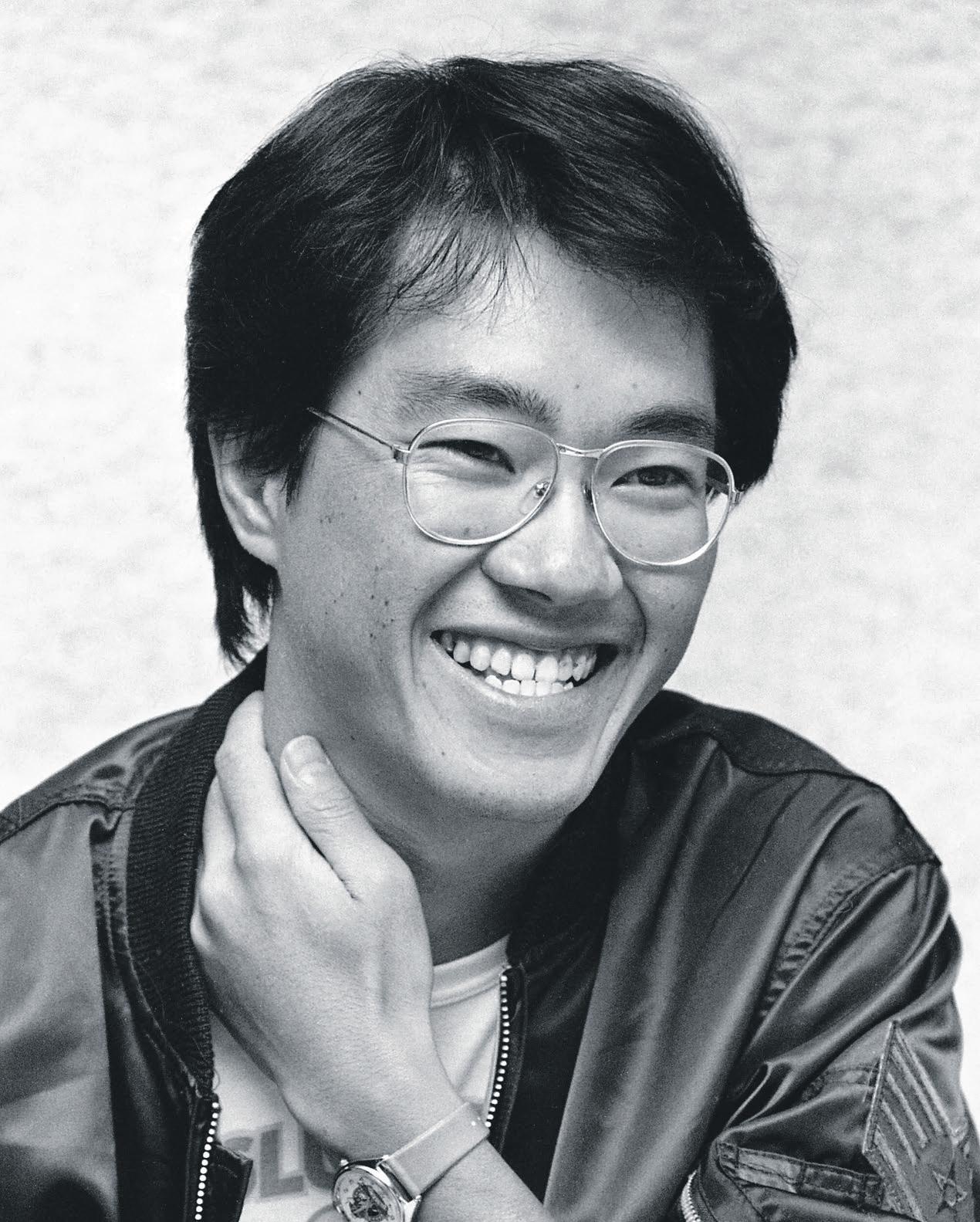
“It is clear that Toriyama’s influence stretched much further than Japan. From government sponsored watch parties in Mexico to Dragon Ball theme parks being built in Saudi Arabia
Network to re-dub, reanimate, and even rescore Dragon Ball with new voiceovers, animations, and even music for a new Western audience. The after school “Toonami” add-on to Cartoon Network introduced an entire generation of kids to Japanese cartoons like Sailor Moon, Pokémon, and Dragon Ball. As Goku himself grew up as the show progressed, so did its young audience, who in turn introduced Dragon Ball to those who came after, creating a reliable dynasty of fans across the globe. This introduction was so successful that platforms such as Crunchyroll established permanent fanbases in Western countries, giving a reliable audience to anime produced with reputable English dubs at the time of release. Anime shows such as My Hero Academia, Attack on Titan, and Yu Yu Hakusho created a “weeaboo” subculture in many Western countries, mainly having to do with an obsession with Japanese culture, especially its popular media.
With this consistent fascination with Japanese media in the West, it makes sense that some of the most-engrossed countries with Dragon Ball are Mexico, Peru, France, El Salvador and the USA. This no doubt has contributed to Toriyama’s decision to keep Dragon Ball going all these years, despite his many flirtations with quitting.
Dragon Ball arrived at a relatively perfect time, with Japan still in the midst of its economic boom in the 1980s and Japanese influence on the world stage at an all time high. Japan began exporting culture at higher rates than before, and, for the first time, tailoring that content to those it exported to. Loose rules surrounding broadcast deals allowed companies like Cartoon
Despite the countless hiccups Toriyama had with his motivation for continuing the franchise, and even despite his recent death in the beginning of March, it seems likely that Dragon Ball will continue. A series about Moro, another villain-turned-friend associated with Goku and his friends, is reportedly in the works, with other offshoot series to follow.
9
Photo by PAP/EPA/JIJI Press

IT’S NOT ALL FUN AND GAMES
Cleo Daly explores the stigma and support to be found when playing video games as a woman.
When a man participates in an online multiplayer game, his thoughts are centred around winning. When a woman participates in an online multiplayer game, her thoughts are centred around winning and not being harassed by male players.
“I’d consider myself a gamer.”
“Oh me too!”
“What games do you play?”
“The Sims.”
There is no greater test of a male gamer’s character than his reaction to the above statement. I myself have used it on many occasions to distinguish friend from foe. But why is it that we have come to expect negative reactions to a game, solely because the majority of its players are women? Oh right, misogyny, my bad.
I asked myself why is it that those who play the Sims tend to be women, when the games industry is so heavily dominated by men. My conclusion: men cannot harass you on it (aside from the rogue male sim). Of course, I wouldn’t say it’s the only reason, but I believe it’s definitely one of them. I found myself deep scrolling on Reddit – dark days – and I found that there are many others who have had a similar opinion on the matter. Women wish to enjoy their pastime without experiencing gender-based harassment. And people say we ask for too much.
I interviewed (Discord direct messaged) some female friends
on their experiences of online gaming. We discussed the harassment they face as women, such as sexist jokes and insults. They find themselves receiving blame for their team’s downfall, and it is automatically presumed that they will play badly.
“If they know I’m a woman on the team they will automatically assume I’m bad or that we will lose.”
“Even when a female player is at the top of the scoreboard, doing better than the players who are male, they are still getting insulted, getting called just lucky and not really having any skills.”
Voice chats are a large part of online gaming when playing in teams. However, it is through these public chats that women receive the greatest abuse. One way in which women have sometimes tried to reduce the negative interactions they experience online is by pretending to be a man. Unfortunately, with the voice aspect of communication this proves to be rather difficult. One of the first things that I do when downloading online multiplayer games is mute both my own microphone and the microphones of others, as well as turn off the chat. I do this due to fear of being insulted or mocked for my skills, especially as I have Cleo as my user, which identifies me as likely being a woman. In doing so, my experience of the game is somewhat limited, as voice chats can be of great use when collaborating with teammates. The girls inform me that they too are wary of having their microphones on, and either leave them off or attempt to scope out their teammates at first before deciding.
“I don’t talk in voice chat most of the time, especially if I’m not playing well, I know I will be insulted for being a woman.”
“When I get into a game I like to test out the waters by saying ‘Hi’, and trying to talk to my teammates to see if they’re okay, making sure they’re not toxic and won’t make sexist remarks. If they do then I just refrain myself from talking and mute them. It’s quite sad that I feel I have to do this, and not just get into the game and be able to talk freely without having to worry about teammates like that.”
In alignment with my experience of telling others about my Sims-playing, female interests in gaming are not taken seriously. The skills and dedication of women are brushed off as secondary to men’s, and they are seen as intruding on a male activity. Perhaps even more devastating is when other women disregard one’s passion for gaming as an activity done with the male interest in mind. “I’ve had people […] say I just play games to impress men.”
The hatred received from men is bad enough, without it being received on our own side. A woman can act in ways that do not revolve around the male agenda.
One friend said she doesn’t “play any games online for the sole purpose of the stigma of being a female gamer”. The gaming industry is yet another area in which women are being kept from, and with this opportunities are lost. One’s involvement in gaming can lead to job opportunities in design, programming, engineering and even esports. It is of little surprise that 70 per cent of jobs in the gaming industry are occupied by men considering the ostracisation of women in these environments. A fair chance is all we’re looking for in this world of inequalities.
One of the multiplayer games that I occasionally play is that of Valorant (I’m not entirely sure why I have chosen to out myself like this, but sometimes sacrifices must be made in the name of journalism). I have only just begun playing, and my skill set is currently far from desirable. I was recommended to play as one character in particular, called Sage by others, as she is considered beginner friendly. However, I was later informed that it is a common stereotype that low skilled women play as Sage with their boyfriends who then play as another character called Jett, and they proceed to spend the vast majority of the game healing their boyfriend’s character (one of Sage’s powers in the game). I was horrified to hear of this as I too was healing my boyfriend, who was playing Jett. Adhering to stereotypes is something I do my best to avoid; I immediately found myself a new character and said goodbye to Sage forever. My boyfriend admitted to me that when himself and his friends (both male
10
and female) play, they presume that the low ranking Sage player is that of the girlfriend, rather than consider that perhaps it is the boyfriend playing Sage or a same-sex couple. Misogyny, to a degree, is rooted within all of us (some more so than others), and the best way to fix it is to acknowledge where it occurs and reflect on our prejudice in the hopes that our mindsets improve.
A report conducted in 2023 stated that of those surveyed, 49 per cent of British females have suffered abuse while gaming online, with this figure rising to 75 per cent for those aged 18 to 24. 80 per cent of these messages were sexual in nature. The sexualisation of women is unfortunately a widespread issue across most media, however it is particularly prevalent in video games. Female characters in gaming are often drawn in revealing clothing to show off unrealistic and incredibly oversexualised bodies. They are portrayed as submissive, and often helpless characters in need of saving by other male characters. This results in the reinforcement of outdated and oppressive gender roles. Analysis conducted by Downs and Smith, found that only 14 percent of characters in leading video games were female. 41 per cent of these characters appeared in sexually revealing clothing, with 43 per cent partially or fully nude. This is in comparison to 11 and 4 per cent of male characters. Females were also a lot more likely to be depicted with unrealistic body proportions: 25 per cent compared to 2 per cent of men. Such games are much less attracted to women, as they feel objectified and unrepresented. This in turn results in them being less willing to become involved in such companies and therefore unable to make a change. An Ohio University study showed that less skilled male players were the most likely to make cruel remarks towards female players. It was suggested by the researchers that these men “attempt to disregard a female’s performance and suppress her disturbance on the hierarchy to retain their social rank.” In other words – my words – talentless, pathetic men get angry about being talentless, pathetic men, and they take out this anger on women because they are not mature enough to handle their own emotions.
“I’ve had people [...] say I just play games to impress men
Organisations such as AnyKey, Femme Gaming, and Women in Games International all strive to make online gaming a safer, and more inclusive space for everyone, and work towards reducing violence against women. Another way in which female gamers are attempting to make their gaming experience an enjoyable one is through female only servers on platforms such as Discord. These servers are there to allow women (and often those who identify as non-binary), the opportunity to play with other women in a safe space, and make online friends without the fear of being harassed or sexualised. Of the female friends that I discussed gaming with, two of them are active in a women’s only server for Valorant, called Valorant’s Angels. The server currently has 6,699 members – a number which is continuously growing.
“I chose the server because I wanted to meet more women who play, I wanted to make friends and know I would be comfortable playing online if I had a few female friends to play with.”
“Less skilled male players were the most likely to make cruel remarks towards female players
Such communities are an incredible way for women to avoid unwarranted and unnecessary abuse for simply engaging in a pastime, though it saddens me that it continues to be women who must come up with solutions for issues caused by men. From sharing one’s location when going home at night to taking a picture of the car registration plate before hopping into a taxi, women are constantly looking for ways to protect themselves from men (yes not all men, but enough that I’m wary of you all). Solutions are not necessary if there isn’t a problem in the first place. But that’s not up to women, that’s up to men. Until these men realise the problem is not ours but theirs, ingenious women will continue to come up with ways to protect one another. As much as I’m a dreamer, I don’t dare dream for a world rid of all inequalities. I do wish for awareness. We must remain aware so that these problems are aired, we must make others aware so that the prevalence of these issues increases. Men will only fix a problem when they realise that it is their problem, too.

11
Photo courtesy of Unsplash
Marnie Clarke’s all-encompassing guide to surviving the elusive Electric Picnic...just
As summer approaches, many youths of today look forward to their annual pilgrimage to Stradbally to partake in the shenanigans of Electric Picnic. Whether they’re veterans or first timers, the excitement and anticipation for this festival buzzes through Dublin in the weeks prior to the start of the festival. Last year I was a first time attendee of this ritual, a hopeful young ‘un looking forward to a weekend of music, friends and general tomfoolery. The weekend proved itself to be full of screams, but no joy comes for free. As I move further away from the fateful time that I once claimed as “the best weekend of my life”, I realise that going to Electric Picnic was a test of personal strength; a weekend full of pushing my body to its limits in harsh conditions.
“I realise that going to Electric Picnic was a test of personal strength; a weekend full of pushing my body to its limits in harsh conditions
You begin the festival as new recruits. You’re still fresh –the shower you had twelve hours ago still can be smelt on your skin. The excitement drowns out the knowledge that your preEP shower will be the last one you take for the next 72-96 hours. I left my home with a giant backpack and two Lidl bags filled to the brim with essentials for the week. We hopped in the car and drove to Stradbally, listening to Fred Again, Billie Eilish and others from the line up. When we ar-
“Hoards of people poured through the gates, desperate for any spot they could grap
rived there was not a cloud in the sky and the sun was beating down upon the queue of excited attendees. Already sweating and burning, my fellow soldiers and I stood in line for about 45 minutes, moving just a few inches every so often. As we made it to check in, we had goods stripped off us: aerosols and vapes were all sacrificed to the graveyard of those metal tables. After you get through check in, there is a feeling of sweet relief. You’ve made it. You have carried this heavy tent and all your baggage. You’re done. The reality is you are never done – you now must walk and fight for adequate space in one of the camp sites. All humanity is gone as you and your friends shoot stares and make biting remarks to the group next to you that is clearly trying to encroach upon the space you have claimed. Although going on Thursday might seem like overkill, I have no regrets as the fight for space we faced was amped up on Friday morning when hordes of people poured through the gates desperate for any spot they could grab. So, if you can go Thursday then do, trust me.
There is nothing quite like waking up in a tent that is covered in morning dew and so humid it feels like soup. What’s better is being

AIN’T NO PICNIC
12
Photo by Wendy Wei

awakened by the blaring sounds of multiple alarms, the music of people who are already starting their day and the snores of your friends. It’s 8 am, and by 11 you have brushed your teeth, wiped yourself down with baby wipes and done your morning poop in a portapotty that has somehow already started to smell like sick. Now, you must get ready for your day. There are various uniform protocols to follow and it all depends on the unpredictable Irish weather. Some people may risk their lives by wearing wellies, leaving their feet in bits by the end of the day. Some may show no regard for life by wearing fresh runners that will no doubt be destroyed by Sunday. Personally, I opted for my sturdy pair of Doc Martens. No matter what uniform is deemed “festival aesthetic” that year (usually a slutty top with cargos, shorts, or a little skirt), the weather can nevertheless switch up in minutes. Last year I was melting in my cargos so I mostly wore my stylish jorts – they are super cool and I did not look like a dad who was bringing his kids to Florida. Yet, by the time night falls you will regret that little strappy Shein top as a chill engulfs the valley. No high can keep you warm from that cold. So, it’s important to make sure that at some point you go back to your tent and grab a jumper. Also remember that you are not Kate Moss; you won’t be in an air conditioned VIP tent with expensive drinks and comfy couches. You are in a poorly put up tent, drinking whatever concoction you so chose (mine was rum and diet coke, which at one point turned into just straight rum) sitting on a wobbly fold-up chair. So, dress accordingly. It’s not a fashion show, it is a matter of survival. Throughout the day, you will see your friends begin to fall all around you. Whether it be pure exhaustion, a K-hole, or just general drunkenness, many will succumb to the elements and it is important not to fall with them. No man left behind and all that – yes, make sure they are okay – but also just because someone went too hard Friday night and wants to go to sleep after the closing act on Saturday doesn’t mean you have to. Find someone else and go to the rave in the woods: it’s a dog eat dog world. That being said, don’t be a dick. If your friend needs help then get them to the welfare tent and don’t leave them stranded. Just
don’t take on the responsibility of attempting to revive someone too far gone. You’re most likely pretty inebriated, so trying to help is fruitless. Instead, get to the people who know what they are doing and make sure your friend is okay. When I say dog-eatdog I mean in a situation where your friend is sleepy and you’re not – this is not an excuse if your friend needs serious help and you’re too drunk to care.
By Sunday, be prepared to look as if you have seen the other side, feel like literal death and smell like someone who has never showered. All the naivete of Friday is gone. You have seen it all by Sunday and not one person has a shit left to give (the porta-loos, in contrast, are endlessly full of it). Some may opt out of the festival uniform at this stage and make the journey in tracksuit bottoms. There are no rules. So wake up, get an overpriced coffee and start drinking: you’ve only got one day left. By this point your body has given up trying to fight and you have surrendered to the forces beyond your control. Your blood alcohol content is through the roof, you are more substance than blood. And you begin to push yourself to the finish line. This day will have the most casualties. I myself fell victim to my humanity as my body gave into dehydration and exhaustion. By the end of Sunday, you are drained from the weekend and dreading the journey home tomorrow. It will be long and taking down the tent is annoying but remember it will be worth it for the long hot shower you get to take right before you snuggle up in your own warm bed.
“By the time night falls you will regret that little strappy Shein top as a chill engulfs the valley
Electric Picnic is hard. That’s how music festivals are. But they are also fun and core memories. My advice to you is to enjoy it, do the activities they have (we did a belly dancing class), drink lots of water, don’t feel guilty about how much you’re spending and go with at least one scout. Without Ronan, Connor, Niamh and Lara I would’ve been screwed. Have a blast and drink responsibly if you don’t want to spend your Sunday morning in the med tent – this is all hypothetical of course…
 Photo by Conal McSweeney/Festival Republic
Photo by Conal McSweeney/Festival Republic
13
Photo via The Irish Sun
MEET LAINEY WHELAN
Clara Potts speaks with the Dublin-based artist and designer reimagining the future of funerals.
What initially inspired you to combine forensics and morbid curiosity in your fine art prints?
From the beginning of my studies in fine art, I have always incorporated a critical approach to forensic matter without even realising. The unknown and the darker realities of life have always intrigued me, meaning that I tend to focus on topics surrounding true crime and its existence as a form of morbid entertainment. This exploration sparked a deeper curiosity in me to examine unattended deaths, missing person databases and my current line of enquiry: what will become of our digital remains once we pass.
Can you walk me through a specific piece where forensics played a significant role in its creation?
Describing my practice through a forensic lens conveys the examination, analysis, and interpretation of details within my work. Put simply, my forensic methodology assembles evidence to construct a narrative. As my work is primarily research led, I view myself as a detective, piecing together information gathered from interactive research within online platforms and manifestations. Ultimately, I draw inspiration from the rapid advancements in artificial intelligence and the digital afterlife industry, examining what the future holds for our digital data thus mirroring the boundary between the digital and physical realms.
What draws you to explore the darker themes of human existence in your artwork? How do you navigate the balance between respecting the subject matter and creating thought-provoking art that challenges societal norms?
Trying to figure out the unknown draws me to enigmatic and obscure themes of human existence. Perhaps I am subconsciously attempting to comprehend my own fears, or hoping to make sense of the overwhelming realities of the concept. In my previous body of work during my time studying abroad in the Netherlands, I read the text ‘The Lonely Funerals Project’, which has been established in Scotland and The Netherlands. This organisation arranges a funeral for those who die without relatives or friends, inviting a poet to compose a piece out of the little information they have access to. The text is a heartbreaking compilation of all these individuals who have died without relatives. After reading the poems, I became very attached to them. What those poets were trying to do was to make a eulogy of someone they never knew, and I think I’m somewhat doing the same in my practice, as I attempt to recreate or investigate (with little information) the uncertainties of life post-death. In order to be sensitive and ensure respect when exploring such a difficult topic surrounding death and grief, I never reveal any of the victims’ faces or their bodies posthumously.
What kind of research do you undertake to ensure accuracy and authenticity when incorporating forensic elements into your prints?
In some of my previous work such as the “trauma scene tights”, I used online images depicting death clean up scenes before transforming them. This overtly raises questions of ownership and alters the context of images. Transforming them into a commodity messes with the ethics, especially when addressing sensitive topics such as crime scenes and death. I consistently reflect on my actions and ensure that I never exploit an individual’s narrative for personal advantage. By generating my research using extensive resources such as digital afterlife websites and missing person databases, I create an
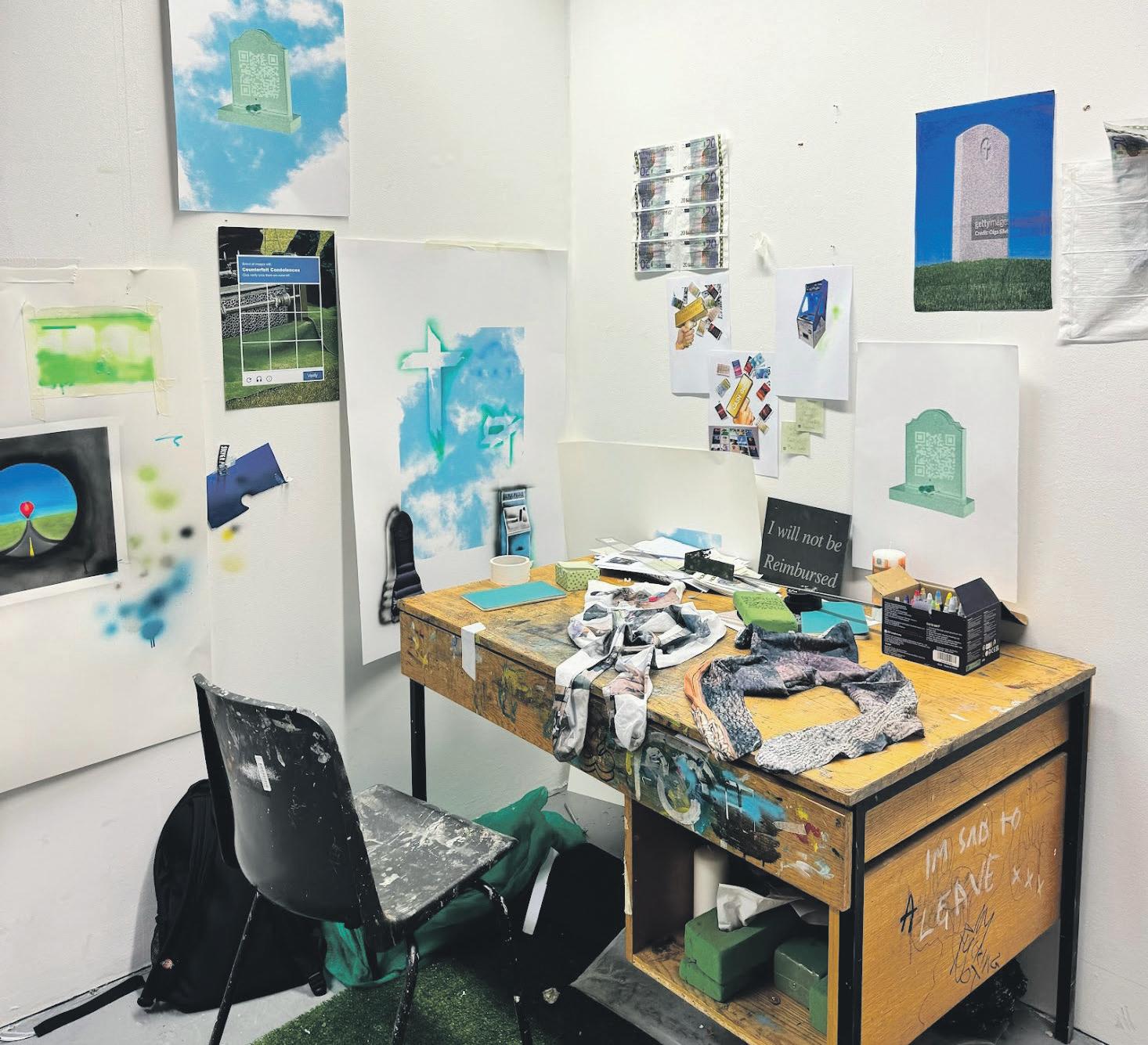
anonymous narrative.
How do you imagine viewers interact with your prints, particularly those with themes related to morbid curiosity?
My practice engages themes surrounding morbid curiosity, which undoubtedly has the potential to make viewers feel uncomfortable. I am aware that my art practice might not appeal to everyone, but the finality of death is an inevitable part of the human experience. Therefore, by pondering this reality and exploring what happens to us once we pass and what we leave behind, I hope to encourage viewers to confront and question their perceptions of mortality in the digital age by engaging in a novel line of inquiry and the dichotomy between comfort and discomfort.
Have you faced any challenges or ethical considerations while creating art that delves into forensic topics?
I continuously question myself, and frequently find myself going down rabbit holes, trying to establish some sort of a presence in absence. I enjoy floating between morals which question the ethics surrounding the relationship we have with death and media. Central to my current pieces is an attempt to raise critical awareness of the rapid advancements in artificial intelligence and the digital afterlife industry, which seeks to immortalise humans through digital means. Think of headstones with QR codes on them. That is the reality now, and will play a large part in our future..
How do you see the intersection of art and forensics evolving in the future, and what role do you hope your work will play in that evolution?
I think I am engaging in a novel and somewhat nebulous line of enquiry. For example, I’ve been looking at AI deathbots that can turn the deceased into chat bots through one’s data by feeding it to an algorithm. We are constantly digitising our daily life and memories, The instant gratification provided by media content fosters a continuous stream of information, leading us to focus less on the longterm implications of the data we generate in the present moment. It is now an inescapable, intrinsic part of our daily lives, which I think will have huge consequences in the future. I think my work is at the tip of the iceberg, uncovering topics surrounding digital memorialisation. My ultimate aim is to raise awareness about this topic, which is central yet often goes unaddressed in our daily lives.
14
Photo by Clara Potts
THINKING FONDLY: AN UNLIKELY ODE TO LONDON
Bridget McBruiser explores wilfully losing - and then findingherself during a summer spent in London.
You can always run away from your problems. It may be completely foolish, it may be reckless, perhaps selfish, or even perfectly morally wrong. But you can always run. There is no way to explain it exactly, no quaint phrase or appropriate adjective I could use to excuse myself. All I can say is that I had to escape. And so I did. It was actually comically easy. Despite what Dublin might have you think, we are in the age where in a matter of emails our lives can change and change again. And so I changed my life. I applied for the job on Monday. That Wednesday I had the interview and then somehow an offer. By the Friday it was fatally accepted, a flight was booked and a bag was packed. I spent my final week shamefully half-assing assignments, staying up to watch ‘Eras Tour’ livestreams and swearing to my grandparents that I would keep in touch.
Once we were alone together under a red sky, as moths among the heath free to sing showtunes; I realised why so many swore that the English country side was so romantic.
Whatever it is I have with him, however mad and extravagant and absurd, it is real. As we parted ways for the final time, he pulled my claddagh ring off my finger and in an instant I was reminded that my old life was my actual life. Suddenly, I was ready to face it. In emigrating, I didn’t escape anything, I was simply pretending to be someone else. I had cast myself as a poor player upon a stage, strutting and fretting and gooning and screaming, but it ultimately signified nothing.
“Wilfully or not, I forgot practically everything about Dublin.
Come the following Saturday, I had to say the only goodbye that actually mattered. It was the only one I was really able to say; I made everyone else the pathetic, false promise that I would see them on Monday! But there was no hiding from him. There never was. I wish I could be trusted to recount the interaction, but I’m afraid the only things I can confidently recall are Italian pastries and silly comments about a possible live action adaptation of Tangled. He was gone and I got through my final shift at what would become my old job and I went to bed and I brushed my teeth and I boarded a plane.
I arrived in London the day of King Charles’ coronation. The caricatures were true — there really were union jacks everywhere, a Pret A Manger on every corner and an oppressive humidity marking the start of summer in a major city. Oddly, I really didn’t mind the troubling iconography or apocalyptic weather. It was all just incredible to me. Immediately I was anonymous, utterly alone and, consequently, completely free. Once I could be anyone, it felt incredible to be the person that I was. For the first time ever, I could do anything. I was a weapon at work and was a fervent flâneur in my free time.
I’ll always be grateful to have experienced the Barbenheimer hysteria, Speak Now’s second release and watching the Titanic submersible sink alongside an incredibly accepting, endlessly kind and obnoxiously courageous cast of characters. But it was time to pull the curtains on my petty play.
I handed in my notice at the theatre and saw all the plays I would regret not seeing. I went on my sad lady pilgrimage. Retracing Patti’s steps from Haworth to Hebdenbridge, singing “It’s me, I’m Cathy, I’ve come home” to the skies and leaving a legami cat pen on Plath’s grave. When I returned to the city, I thanked the portrait of Mary Wollstonecraft for everything, and I swore to her that I would do something great.
“In emigrating, I didn’t escape anything, I was simply pretending to be someone else.
I had cast myself as a poor player upon a stage, strutting
Wilfully or not, I forgot practically everything about Dublin. It just didn’t cross my mind. There was no real proof that I existed before May 8th, nor were there any reminders that I would actually return; I carried on as if it didn’t and wasn’t. A new life was budding. I was infatuated with every new acquaintance, mesmerised by all the art at my fingertips and adoring of the spare Sundays on which I would slip off to the Heath for a swim. Sure, the odd text or tweet would try to interrupt my new reality, but not one notification succeeded. They were all too easy to ignore. I now had a life that was easy to love and, slowly, I started to fall in love with myself. I didn’t think that any phantom or secret history could distract me.
But on another Tuesday spent brooding around the V&A I was reminded that it isn’t so simple. You can run but you can’t hide. I was gazing into the eyes of Michelangelo’s David when he called. Within forty eight hours he was there. As I tried to show him my new everythings I was overwhelmed by how shallow it all seemed.
Since, all I have been trying to do is trying to figure out how. I returned and rebuilt my room. My beautiful little room. Where I get to the real work. I read and write and read and write. Lately, I can’t help but look around at the little life I have for myself here and wonder what could be sold, what should be packed, what should probably be destroyed. What I will have to do when it is once again time to run away… how exactly I will start all over again. I’m not scared of this inevitable demise. Like most strange adult-children in Dublin, I will be glad to finally flee my parents’ house for good. It is fun to consider the endless ways of starting another life. It is exciting to think that there is always someone else to fall in love with.
Everything is easier with that in mind. Now, as the summer is seemingly starting again, I can finally, comfortably say that I am staying right here. That doesn’t make moving on an easy thing to do. I still butcher most goodbyes and have rolls and rolls of film from last summer that I refuse to develop. I am probably still avoiding subconscious fears that there is no way to reprise that period of my life. But I have gained an unwavering faith in tomorrow and tomorrow and tomorrow. I will chase the albatross no matter where that leads me.
It is not sad or pathetic or somehow cruel, but beautiful to admit that no matter what happens, there will never be a day where what I loved and lost doesn’t cross my mind.
That no matter how the flowers and fruits of summer fade, there will never be a day when I don’t think of it all fondly.
15
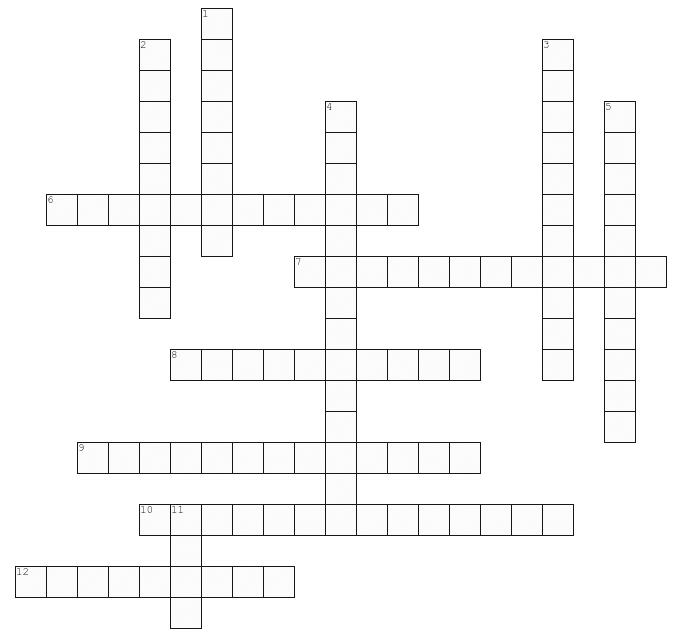
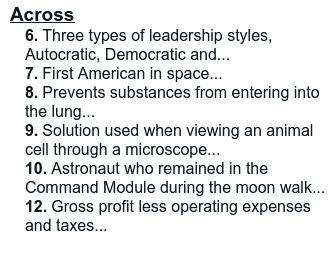

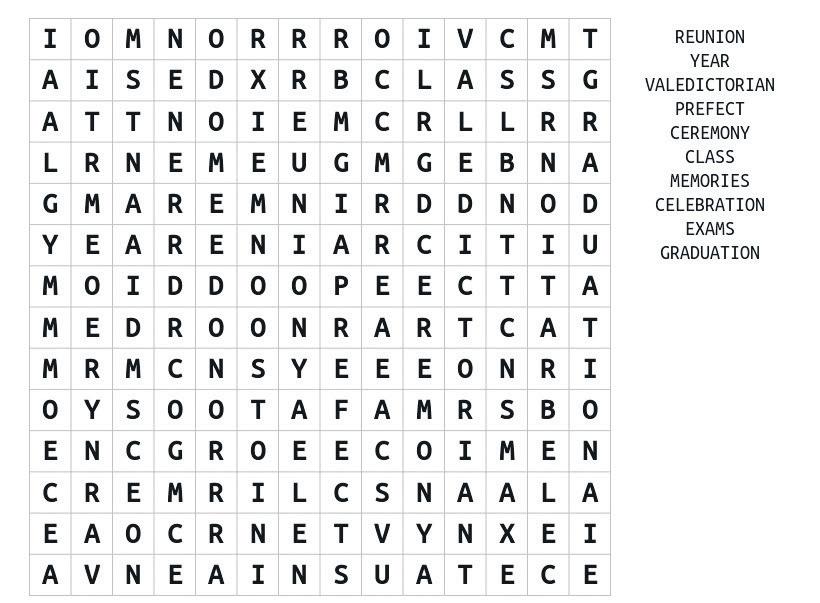
























 Photo by Conal McSweeney/Festival Republic
Photo by Conal McSweeney/Festival Republic




